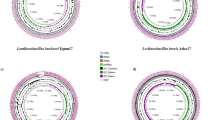Abstract
Aspergillus fumigatus (Afu) causes allergic and invasive forms of diseases in humans. In order to identify genes relevant for pathogenesis, a total of 235 cDNA clones were randomly selected and sequenced from cDNA library of Afu. One of the partially sequenced cDNA clones was homologous to polyubiquitin. Sequencing of the complete cDNA clone showed an open reading frame of 912 bases. Comparison with genomic sequence of Afu using BlastN program, revealed that polyubiquitin gene comprises of 992 bases and contains one intron of 80 bases. The recombinant expression of fusion protein showed an approximately molecular weight of 43-kDa on SDS-PAGE. The translation product of the cDNA sequence showed four tandem repeats of 76 amino acid residues in a single polyubiquitin protein and showed 100% identity with polyubiquitin protein sequences of S. cerevisiae, N. crassa, C. albicans, S. pombe, and M. grisae. Polyubiquitin gene is known to play important role in a variety of cellular processes and recently have been implicated in fungal pathogenesis. Identification of polyubiquitin gene of Afu has opened up scope to study its role in understanding Aspergillus biology and pathogenesis.
Similar content being viewed by others
References
Pitt, J.I., Samson, R.A. and Frisvad, J.C. (2000) Integration of modern taxonomic methods for Penicillium and Aspergillus classification, Harwood Publishers, Amsterdam, p 9–49.
Yu, J., Bhatnagar, D. and Ehrlich, K.C. (2002) Aflatoxin biosynthesis. Rev. Iberoam. Micol. 19, 191–200.
Latge, J.P. (1999) Aspergillus fumigatus and aspergillosis. Clin. Microbial. Rev. 12, 310–350.
Heather, R.K., McCafferty and Talbot, N.J. (1998) Identification of three ubiquitin genes of the rice blast fungus Magnaporthe grisea, one of which is highly expressed during initial stages of plant colonization. Curr. Genet 33, 352–361.
Kurokawa, C.S., Sugizaki, M.F. and Peracoli, M.T. (1998) Virulent factors in fungi of systemic mycoses. Rev. Inst. Med. Trop. Sao. Paula. 40, 125–135.
Fillingham, J.S., Chilcoat, N.D., Turkewitz, A.P., Orias, E., Reith, M. and Pearlman, R.E. (2002) Analysis of expressed sequence tags (ESTs) in the ciliated protozoan Tetrahymena thermophila J. Eukaryot. Microbiol 49, 99–107.
Gouwu, W., Xinbing, Y.U. and Zhongdaola, W.U. (2002) Generation and analysis of 113 adult stage Schistosoma japonicum (chinese strain) expressed sequence tags. Chin. Med. J. 115, 1517–1520.
Neumann, M.J. and Dobinson, K.F. (2002) Sequence tag analysis of gene expression during pathogenic growth and microsclerotia development in the vascular wilt pathogen Verticillium dahliae. Fungal Genet. Bio. 38, 54–62.
Verdun, R.E., Dipaloo, N., Urmenyi, T.P., Rondinelli, E., Frasch, A.C. and Sanchez, D.O. (1998) Gene discovery through expressed sequence tag sequencing in Trypanosoma cruzi. Infec. Immun. 66, 5393–5398.
Shankar, J., Nigam, S., Saxena, S., Madan T. and Sarma, P.U. (2004) Identification and Assignment of Function to the Genes of Aspergillus fumigatus Expressed at 37°C. J. Eukaryot. Microbiol. 51, 428–432.
Maneger, I.D., Hehl, A., Parmeley, S., Sibley, L.D., Marra, M., Hiller, L., Waterson, R. and Boothroyd, J.C. (1998) Expressed sequence tag analysis of the bradyzoite stage of Toxoplasma gondii: Identification of developmentally regulated genes. Infec. Immun. 66, 1632–1637.
Goldman, G.H., Marques, E.D.R., Ribeiro, D.C.D., Bernardes, L.A.D.S., Quiapin, A.C., Vitorelli, P.M. et al. 2003 Expressed sequence tag analysis of the human pathogen Paraceccidioides brasiliensis yeast phase: Identification of putative homologues of Candida albicans virulence and pathogenicity genes. Eukaryot. Cell. 2, 34–48.
Saxena, S., Madan, T., Muralidhar, K. and Sarma, P.U. (2003) cDNA cloning, expression and characterization of an allergenic L3 ribosomal protein of Aspergillus fumigatus. Clin. Exp. Immunol. 134, 86–91.
Nigam, S., Sarma, P.V.G.K., Ghosh, P.C. and Sarma, P.U. (2001) Characterization of Aspergillus fumigatus protein disulfide isomerase family gene. Gene. 281, 143–50.
Sambrook, J., Fritsch, E.F. and Maniatis, T. (1989) “Molecular cloning a laboratory manual”, Second Ed. Cold Spring harbour, New York.
Jentsch, S. (1992) The ubiquitin-conjugation systeM. Ann. Rev. Genet. 26, 179–207.
Hershko, A. and Ciechanover A. (1998) The ubiquitin system. Annu. Rev. Biochem. 67, 425–479.
Ciechanover, A. (1998) The ubiquitin-proteasome pathway: on protein death and cell life. EMBO J. 24, 7161–7160.
Finley, D., Bartel, B. and Varshavsky, A. (1989) The tails of ubiquitin precursors are ribosomal proteins whose fusion to ubiquitin facilitates ribosome biogenesis. Nature. 338, 394–401
Sepulveda, P., Lopez-Ribot, J.L., Gozalbo, D., Cervera, A., Martinez, J.P. and Chaffin, W.L. (1996) Ubiquitin-like epitopes associated with Candida albicans cell surface receptors. Infect. Immun. 64, 4406–4408.
Bouchara, J.P., Sanchez, M., Chevailler, A., Marot-Leblond, A., Lissitzky, J.C., Tronchin, G. and Chabasse, D. (1997) Sialic acid-dependent recognition of laminin and fibrinogen by Aspergillus fumigatus conidia. Infect Immun. 65, 2717–2724.
Tronchin, G., Esnault, K., Renier, G., Filmon, R., Chabasse, D. and Bouchara, J.P. (1997) Expression and identification of a laminin-binding protein in Aspergillus fumigatus conidia. Infect. Immun. 65, 9–15.
Author information
Authors and Affiliations
Corresponding author
Rights and permissions
About this article
Cite this article
Shankar, J., Madan, T., Basir, S.F. et al. Identification and characterization of polyubiquitin gene from cDNA library of aspergillus fumigatus. Indian J Clin Biochem 20, 208–212 (2005). https://doi.org/10.1007/BF02893072
Issue Date:
DOI: https://doi.org/10.1007/BF02893072




